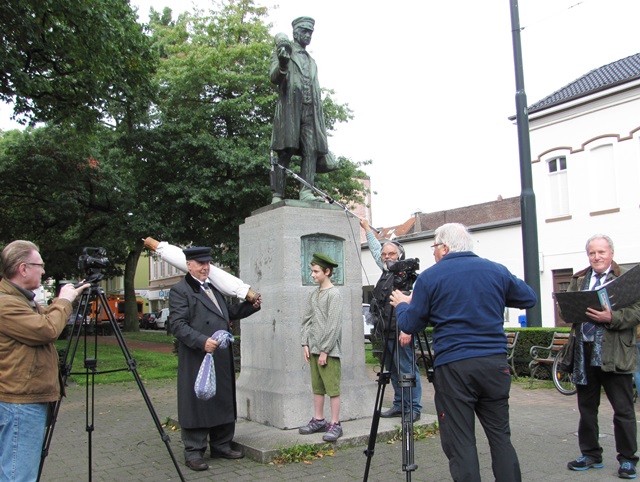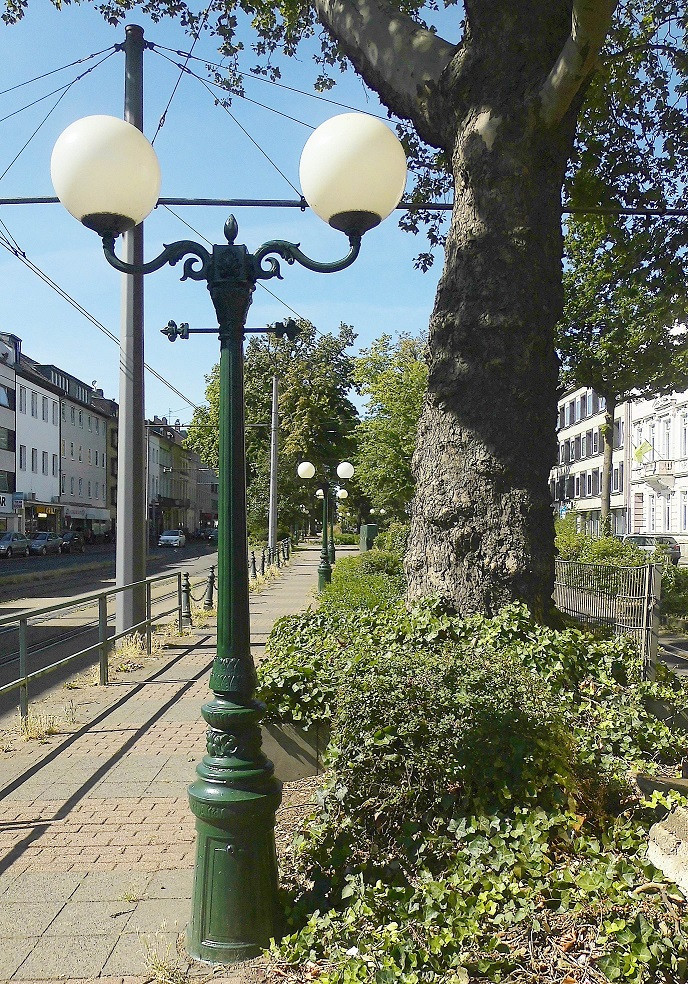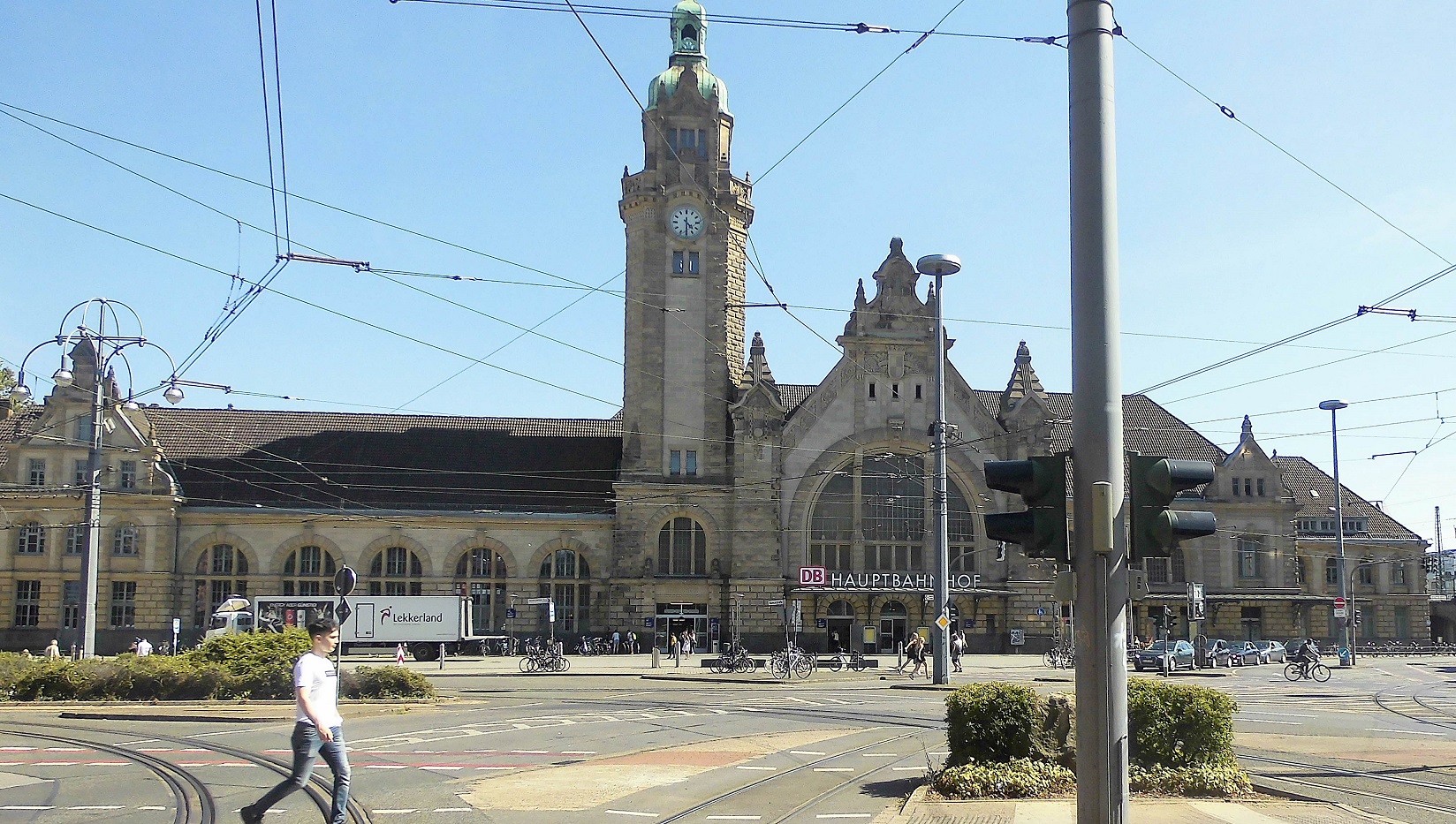Haus der Seidenkultur invites you to discover Krefeld from new perspectives
At holiday time one does not necessarily have to travel to far-flung places “because the best is near at hand”, says Dieter Brenner from Haus der Seidenkultur (HdS) ”Discover Krefeld from a completely new perspective”.
For example, during a two-hour “Town Walk along Silk Routes”. Starting at the main station the walk first leads along the central boulevard of the Ostwall as far as “Meister Ponzelar”.For example, during a two-hour “Town Walk along Silk Routes”. Starting at the main station the walk first leads along the central boulevard of the Ostwall as far as “Meister Ponzelar”.“Very few Krefeld citizens have ever walked along the central boulevard of the main street“, says Brenner. “We are only familiar with the houses on the right and left of the Ostwall from the perspective of our cars”, is a frequent remark from participants. They learn that the four “Wall” (boulevards) were designed by the architect Adolph von Vagedes from Munster as part of the sixth town extension between 1830 and 1840. Standing in front of the weavers’‘ monument, it is revealed that “Meister Ponzelar” has not haltered a deckchair on his shoulders but a roll of cloth. The monument was erected in 1910 by the Krefeld Verschönerungsverein (association whose aim was to enhance the town). The roll of cloth is the cloth which winds on to the beam in front of the weaver sitting at the loom. The home-weaver regularly visited his employer with a cloth roll hoping to receive another order when he handed over the fabric.
Originally the life-sized figure stood at the junction between Lindenstrasse and Hochstrasse. During the war the monument was melted down and in 1945 re-cast in the original casting mould which had been preserved and then erected at the present spot - Südwall corner of Ostwall. The statue on the pedestal represents a typical home-weaver who worked with his bobbin boy in one of the two-window houses. Originally the life-sized figure stood at the junction between Lindenstrasse and Hochstrasse. During the war the monument was melted down and in 1945 re-cast in the original casting mould which had been preserved and then erected at the present spot - Südwall corner of Ostwall. The statue on the pedestal represents a typical home-weaver who worked with his bobbin boy in one of the two-window houses. “The architecture in the textile town was rated according to the window arrangement on the first floor” explains Brenner pointing to the ten-window house on the Südwall where it meets the Westwall which was built by the well-known silk weaving family Casaretto. The family originally from Genoa produced ecclesiastical fabrics for the Catholic Church on this site. The activities of the Casarettos motivated Hubert Gotzes to purchase a small weaving workshop in Luisenstrasse 15 in 1908 where he also started to produce priests‘ robes. Through fortunate circumstances this weaving workshop for ecclesiastical textiles – the present HdS museum – once upon a time became world famous. Even the Vatican kept an eye on the Hubert Gotzes production workshop in Krefeld. “That is one of the fascinating stories which we tell our visitors during the two-hour guided tour through the four-window house”, says Brenner.
And “In addition to a visit to the museum we offer a complete Krefeld tourist package for class reunions, company anniversaries, birthdays or other occasions“. The “Town Walk along Silk Routes” is just one programme item from the wide range on offer which can be combined for a Krefeld Day or an entire weekend of discovery according to the individual customer requirements.
For example there is a ride on the “Blauen Enzian” . The tram dates from the time of Kaiser Wilhelm and travels along a circuitous route to Uerdingen where we head for the Dujardin distillery. Following the guided visit it is possible to dine in the Alte Küferei‘ (former coopers‘ workshop).”
For the tour guides it is very important to combine the past, the present and the future of the Town like Silk and Velvet” in the tourist packages on offer. Therefore: „Anyone who wants to find out how a simple “Krähenfeld” (literally crow field) – that is where the name Krefeld comes from – became the richest town in Prussia should contact This email address is being protected from spambots. You need JavaScript enabled to view it.. Infos can also be obtained by phone under 02151-9345355

For those who would like to experience a “Town Walk along Silk Routes” squeezed into just under 20 minutes Haus der Seidenkultur has recently produced a film. To do this “Meister Ponzelar” (Klaus Drenk) got down from his pedestal. He takes his bobbin boy Elias to the historically important places in the town which many passers-by do not even notice. On the right of the picture scriptwriter and town guide Dieter Brenner The film is on sale as a DVD for 15 € in the museum.
photo: HdS-Archive
The green boulevard in the Ostwall starts at the station.
Krefeld Main Station. An imposing building, 114 m wide with an 48 m clock-tower. Once upon a time the Austria Express from Klagenfurt used to stop here.
Hds-photos (2): Brenner


